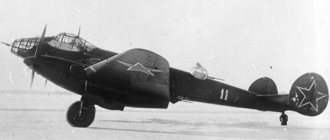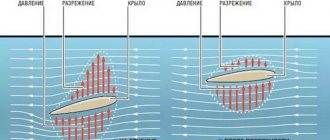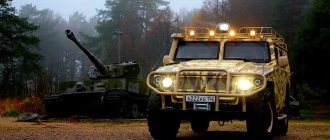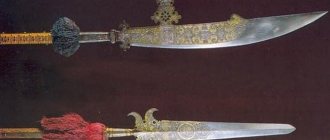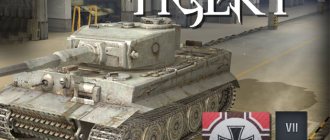Who said that “Crocodiles” don’t fly: the US Air Force appreciated the Russian “old man” Mi-24
Actually, why was the Mi-24 attack helicopter nicknamed “Crocodile” by the troops? As far as is known, there is no authentic story on this matter, most likely due to some external similarity - an elongated body, a pot-bellied “belly” and tail. Plus incredible power and aggressiveness in attack, which few people would want to experience. The unofficial name “Crocodile” took root precisely during the Afghan War, where the Mi-24 actively participated in combat operations and performed well (there, by the way, the Su-25 attack aircraft received the nickname “Rooks”). And now say the word “crocodile” to a military man, he will first of all think not about alligators, but about helicopters.
In the US Army, the Mi-24 is called differently: according to the NATO classification it is Hihd - “Doe”, due to the high speed qualities of this helicopter. The Americans, as follows from military reviews, have always looked closely at this combat rotorcraft, and now they used the Mi-24 for the first time during their exercises.
How the Mi-24 Crocodile destroyed the American F-4 Phantom
Why the Mi-24 attack helicopter was nicknamed “Crocodile” by the troops is not known for certain. Most likely, for some external resemblance - an elongated body, a pot-bellied “belly” and a tail. Plus incredible power and aggressiveness in attack, which few people would want to experience. The unofficial name “Crocodile” took root during the Soviet war in Afghanistan, where Mi-24s actively participated in combat operations and performed well. And if you say the word “crocodile” to a military man, he will first of all think not about alligators, but about helicopters.
"Military Internet" for missiles. Air defense and missile defense will be combined into a single network
Russian air defense and missile defense troops will improve the organization of combat duty...
10 December 20:55
In the US Army, the Mi-24 is called differently: according to the NATO classification it is Hihd - “Doe”, due to the high speed qualities of the helicopter. The Americans have always taken a close look at this combat rotorcraft, and they themselves used the Mi-24 during exercises.
It is clear that not for subsequent purchases, but as an imitation of helicopters of a potential enemy. Two Mi-24 attack helicopters (they were purchased from Bulgaria, where they were in service) were used in 2022 during exercises by the 55th Squadron of the US Air Force near the Mexican border to assess the capabilities of their pilots during air combat. At the same time, we tested our modernized helicopter version of the Sikorsky HH-60G Pave Hawk.
It was no coincidence that the Americans chose the Mi-24 as the “enemy” for their HH-60G Pave Hawk - it became the world’s first helicopter armed with air-to-air missiles. And I have used them successfully several times.
There is a unique case when in 1982, in the skies over Libya, a Syrian Mi-24 shot down an Israeli supersonic F-4 Phantom (“Phantom”), which attacked a helicopter, but gave itself away by radar radiation. The “Crocodile” turned in the air and fired two R-60 air-to-air missiles from a distance of 8 kilometers. Both hit the target.
In the same year, an Iraqi Mi-24 shot down a Phantom belonging to Iran. Victories over aircraft by the Mi-24 helicopter were also recorded over American F-86 fighters and A-37 attack aircraft in Nicaragua. By the way, it was the Iran-Iraq war, which lasted from September 1980 to August 1988, that for the first time in history became an air battlefield between helicopters. The clashes mainly involved Mi-24 and AN-1 Cobra helicopters - with the obvious advantage of the Crocodiles.
The Mi-24 (now in the export version it is the Mi-35M AN-2 Saabre) is in service not only with Russia, but also with a number of other countries “unfriendly” to the United States, including Iran, Venezuela, North Korea and others. Including an unknown number of Mi-35s were delivered to Yemen. In total, 60 countries operate the Mi-24 in varying quantities.
"Cloud" against Javelin. How can you deceive an American ATGM?
The Pentagon said that Ukraine could use anti-tank missile systems (ATGMs) received from the United States...
10 December 18:54
Our “old man” (serial production of the Mi-24 began in 1972), judging by the reviews of the American press and the military themselves, did not disappoint during the US Air Force exercises and behaved with dignity.
The Aviationist (one of the most reputable sites in the field of military aviation) published an article claiming that “the Soviet-Russian Mi-24 attack helicopter used during the Afghan War has proven to be a highly effective weapon system.”
“Training using attack Mi-24s is a serious step forward, which allows us to draw conclusions about the capabilities of our helicopters, the relevance of our tactics, the procedures and weapons used,” the publication quoted the representative of the US airbase, Captain Kurt Wallin.
Another of the main features of the Russian attack helicopter is the presence of armor. On the Mi-24 these are windshield armored glass, armored seats and armor plates on the sides of the pilot and operator cabins and on the engine cowlings. In Afghanistan, the front armored glass of the Crocodile was never pierced, although it received many bullet marks during combat missions.
The Mi-24 can also carry very powerful and varied weapons. The full combat load is up to 2,400 kilograms (the ammunition load of the T-72 tank, for comparison, weighs less than a ton). In Afghanistan, the standard load of the Mi-24 consisted of two blocks of unguided aircraft missiles, two FAB-250 aerial bombs and ammunition for a cannon or machine gun.
The Russian army knows the real value of this helicopter - the Mi-24 has proven itself well not only in Afghanistan, but also during the two Chechen wars, and even now in Syria it effectively supports the Russian contingent from the air.
The author's opinion may not coincide with the position of the editorial board of Gazeta.Ru.
"Crocodiles" of World War II
Before the outbreak of World War II, tank building was actively developing in all countries of Europe, America and other countries, but from the experience of World War I it was clear that tanks themselves could not operate without the support of special vehicles. One type of such vehicle was flamethrower tanks. They were built on the basis of serial vehicles in almost all countries; they achieved particular success in this direction in the Soviet Union. Flamethrower tanks based on the T-26 were created in considerable quantities (HT-26, HT-130, during the Great Patriotic War, were built on the basis of the KV and T-34), they took part in the Finnish War and at the beginning of the Great Patriotic War.
Leading European countries also kept up with the construction of such machines. In 1940, the Churchill heavy infantry tank was put into service in England, the design of which was quite old-fashioned and more reminiscent of the archaism of the First World War (only sponsons were missing on the sides). It was the heaviest English tank of World War II until the appearance of the heavy German tank “Royal Tiger” (1944) at the front: its armor reached 152 mm, but the gun and low mobility were the weak points of this vehicle. Initially, it was planned to make flamethrower tanks based on Churchill IV, but later the choice fell on Churchill VII.
In 1943, based on the Churchill VII, the flamethrower modification “crocodile” was created, which became undoubtedly the most famous flamethrower tank of World War II. In total, about 800 of these machines were built. The design of the flamethrower version of the Churchill was quite common for European vehicles of that period. The trailer was connected to a fire hose installed in the frontal plate of the hull instead of the Besa machine gun, by special tubes that ran along the bottom of the tank. The firing range of the flamethrower reached 120 meters. After shooting the fire mixture, the trailer was dismantled, and the tank could continue combat operations. The Crocodiles also had their own significant drawbacks: a hit from an anti-tank gun to a trailer caused its detonation, and the fire in most cases spread to the tank’s hull. Another significant drawback was the rapid drop in gas pressure that forced the fire mixture out of the trailer; because of this, gas had to be pumped in just before the battle. A terrible fate awaited the crews of the vehicles, because according to the unwritten rule of war, flamethrowers were not taken prisoner.
"Crocodiles" were used in the Italian theater of war. On 10 April 1945, between the town of Faenzo and Lake Comacchio, the vehicles of the 21st Brigade fought their way through German positions, supporting the 8th Indian and 2nd New Zealand Infantry Divisions. On April 18, Italy's defenses collapsed, this was the last episode of the Crocodiles' participation in World War II. Also, five copies of “Crocodile” were delivered to the USSR under the Lend-Lease program for review. After World War II, the Churchills were not forgotten: with the outbreak of hostilities in Korea, the tanks sent for mothballing had to be disturbed. But it is worth noting that cannon versions of the Churchill were not used in Korea, only flamethrower versions were used (they were more often used as cannon versions) and bridge layers based on the Churchill. On January 4, 1951, tanks took part in the offensive in the Hangan River area. After the end of the fighting, on February 21, 1951, most of the Churchills were faulty and required repair. After the end of the Korean War, flamethrower versions of the Churchill were not used and were soon decommissioned. The Churchills were replaced by more advanced Centurion tanks.
Today our helicopter pilots are celebrating the anniversary of one of the most popular attack helicopters in the world, the Mi-24. “Crocodile”, and that’s what we call it, is 50 years old. This vehicle is in service in more than 60 countries around the world and all these years has terrified those who have to face it in battle.
Someone will say that a lot has already been said about the Mi-24 and in general the machine is already old, now there are much more modern helicopters. I beg to differ with this statement. Indeed, a lot has been said, but not everything, and the car, despite its age, is still able to “show its teeth.” There are many examples of this, for example, the operation of the Russian Aerospace Forces in Syria, where the “Crocodiles” terrified and will continue to terrify terrorists.
Flying infantry fighting vehicle
The Mi-24 was originally created as a powerful attack aircraft, a sort of “flying infantry fighting vehicle.” Many elements and assemblies of the helicopter are armored, and the helicopter is capable of delivering strikes under heavy enemy small arms fire, practically “opening” the enemy’s defenses. At the same time, the Crocodile is one of the fastest helicopters in the world: its maximum speed reaches 330 km/h, and the power of each of the two TV3-117V engines is 2200 hp.
Over the decades, the car has changed a lot both externally and internally. In the photo, the Mi-24A is the first modification from the family of the famous “Crocodiles”.
Pay attention to the unusual, veranda-like cockpit. This is exactly what was on the first modifications of the Crocodile. She had a number of disadvantages, such as poor visibility and poor crew protection. Mil Design Bureau responded quite quickly and, starting with the modification of the Mi-24D, the cockpit was replaced with the usual “tandem” one, where the pilot and weapons operator are in different compartments, separated by an armored partition. Glass armor was also added, which significantly increased the pilots' chances of survival during shelling. In addition, the cabin became sealed, so the helicopter could perform its tasks even in a contaminated atmosphere.
Mi-24A with the Veranda cabin and the tail rotor already moved to the other side
It is worth noting that the machine was created in a surprisingly short time: its development began in 1968, in September 1969 a prototype took to the skies, and in 1971 operation began. But at the same time, unique innovative solutions were incorporated into its design.
Firstly, the Crocodile fuselage is “twisted” relative to the main rotor shaft by a couple of degrees. This is almost invisible to the naked eye; an outside observer is unlikely to notice that the body of the helicopter “leads a little to the side.” This becomes noticeable during takeoff: usually single-rotor helicopters take off and hang in the air a little sideways, but the Mi-24, thanks to its design, tears off all three wheels at the same time and hangs absolutely level. This is important because the flatter the cockpit position, the more accurately you can fire while hovering.
Secondly, the large wings, on which 6 weapon suspension points are located, are inclined at an angle of 12 degrees. During horizontal flight, they create additional lift, unloading the main rotor by up to 25%. This is especially felt when performing vertical maneuvers, for example, a “slide” or a “combat turn.” Thanks to its wings, the Crocodile simply “jumps” into the air. True, the overload can reach 4 g.
Thirdly, the Mi-24 has a landing gear retraction system, which reduces drag during horizontal flight.
The result was a helicopter that was ahead of its time, including its American competitor, although the United States began using helicopters in military operations earlier than the USSR. So, if you put the same age Bell AH-1 Cobra and Mi-24 “Crocodile” side by side, the latter makes a much more impressive impression both in its appearance and in its armament.
Iron crocodile teeth
According to NATO classification, the Mi-24 received the designation “Hind” (“Doe”). But if we compare the helicopter with the horned forest inhabitants, then, in my opinion, the nickname “Moose” would suit it much better. And indeed, like a moose through a dense taiga thicket, the Mi-24 is capable of breaking through enemy defenses. But in order to achieve such efficiency, the designers did a lot of work, and first of all this affected the weapons.
The first Mi-24A helicopters were equipped with the Phalanx ATGM system. This rocket was not a new product at that time and, frankly speaking, had a number of disadvantages. It was controlled manually with a joystick, and commands were transmitted via a wire that it pulled behind itself.
Gunsmiths were then far behind helicopter manufacturers, and the machine was equipped with weapons, so to speak, “as the play progresses.” Only on the “B” modification, the “Phalanx”, outdated in all respects, was replaced with the modern supersonic “Sturm-V” with the “Raduga-Sh” automated guidance system.
This missile was controlled via a secure radio channel in semi-automatic mode and could penetrate even the highest quality armor up to 40 mm thick. Aiming happened like this: the operator, looking through the Rainbow sight, placed a crosshair on the target and held it on it until the moment of impact. At the same time, marks on the pilot’s aiming station lit up, showing the firing sector. The helicopter could maneuver, but it was impossible to leave the sector, because in this case the guidance would fail.
Currently, the Krokodil is equipped with Ataka missiles and air-to-air missiles.
The cargo cabin, also armored, can accommodate up to 8 fully equipped paratroopers. If necessary, the glazing of the cargo compartment was folded back, and from each window it was possible to fire from hand weapons. True, practice has shown that simultaneously using a helicopter in both guises - attack and landing - is quite problematic, because the total load exceeded all permissible limits, but the presence of the landing cabin saved many lives in Afghanistan and Chechnya.
Now imagine what’s going on in the soul of an adversary who, even at the bottom of the deepest trench, will not feel safe if such a shooting “monster” is approaching from above.
Test by war
Military conflicts, especially Afghanistan, had a huge impact on the development of the Russian helicopter fleet. The helicopters received new, high-altitude engines and stopped “choking” at high altitudes from lack of power, and high-quality dust protection devices increased their service life. Having come a long way from shooting heat traps and the Lipa station to the unparalleled President-S system, helicopters have learned to defend themselves against MANPADS.
By the way, the Americans in Afghanistan faced even greater problems. For example, their helicopters lacked power at high altitudes. The famous UH-60 Black Hawk simply suffocated in the highlands and was virtually unable to transport personnel. The engines, despite the presence of ROM, failed.
Another military conflict where opposing vehicles collided was the Iraq-Iran war. The overall bill was for our helicopter, but this is a topic for a separate discussion.
US pilot chooses Doe
One day I came across an old article about a US Army pilot who flew a Russian Mi-24. After that, he spoke quite emotionally about how dangerous an adversary the Russian Krokodil could be.
Senior Noncommissioned Officer Jeff Staton was recruited to fly Russian helicopters in the mid-1980s when an American ghost agency got its hands on an Mi-24 and flew it to a remote airfield in the United States. Staton was invited because he was testing the McDonnell Douglas AH-64 Apache at the time.
According to the pilot, when he saw the Mi-24, his knees began to shake. “My first thought was: “What a huge fool!” Empty, it weighed 21,000 pounds (9,513 kg)—three times the weight of the Bell AH-1 Cobra and about one and a half times the weight of the Apache.” The American pilot was shocked by how well the cockpit was protected, as well as the main structural elements - there was nothing like this in American helicopters.
Taking the Hind into the air, Staton was impressed by the smooth, smooth flight.
“Then, after about two-thirds of the way, we felt more confident and began to peer into the missile sight. “I’ll just pretend to fire missiles,” I thought, and pressed the switch, which is the missile launch button on the AH-1 Cobra. Immediately we went through three forced changes in height, rotation and direction. I went into a Dutch turn and other maneuvers that I didn't intend to do. What a flight it was!”
The fact is that by touching the button, as he believed, to “launch missiles,” Staton turned on the flight stabilization system, which began to compensate for the previous maneuver, which led to these forced maneuvers.
After the flight, the pilot made several admiring comments about the Russian aircraft. Among them were the following: “Tough as a tractor”; “Put it in the shed for a year, then charge the batteries and you can fly right away! This won’t work with our helicopters”; “In flight, the helicopter goes smoothly, like an old 1962 Cadillac rolling down a good road.”
Finally, Staton delivered what, in my opinion, is the ultimate honor. One day during a conversation, he leaned back and said:
“You know, if I wanted to fly a helicopter just for my own pleasure, without a doubt, “Hind” would be a clear priority when choosing.”
May the reader forgive me for such a long quote, but if a pilot from a country where there is a obviously opposing engineering school says this about a helicopter, then the machine is really good.
The Russian “Crocodile” has come a long and glorious battle path, and its story is far from over, because to this day it is in service with many countries, including Russia. The vehicle is being modernized and equipped with modern weapons and electronics, and, despite the fact that in the Russian Air Force the veteran’s place is already beginning to be taken by his “children” Mi-35, Mi-28N and Ka-52, he does not give up and still remains in I'm building.
Dmitry Drozdenko
LikeLikeTweet
Myths about the “Crocodile”: the sensational exploits of the rotorcraft legend
The idea of creating an unusual vertical take-off machine was dreamed of by the great Italian scientist Leonardo da Vinci. But only at the beginning of the 20th century did actual working prototypes of aircraft appear. The Americans managed to make the first controlled flight in 1922 in the car of the outstanding Russian scientist Georgy Botezat. This same device became the first military helicopter. By the way, helicopter construction was just one of Botezat’s hobbies; his main field of activity was airplanes and space flights. It was on the basis of his calculations that the Americans drew up their program for flying to the Moon.
However, in those years helicopters were treated as a kind of hobby for the marginalized. Despite hundreds of successful flights of the Botezat machine, the American military shut down the development, and all efforts were devoted to creating aircraft. Only after World War II did the military in the USA and USSR begin to pay enough attention to helicopters for developers to hope for funding and mass production of their creations. This became possible due to the fact that the new engines made it possible to make not just reconnaissance rotorcraft, whose duties were easily handled by aircraft, but also transport ones. It was the possibility of transporting personnel and cargo that attracted customers, because helicopters, unlike airplanes, did not require much space for takeoff and landing.
Thus, the first truly mass-produced military helicopter was the Pyasetsky CH-21, also known as the “banana”, the ancestor of the famous “Chinook”. It was positioned as a transport vehicle, but after the first baptism of fire by the French in Algeria, army craftsmen tried to self-mount machine guns on the sides.
The experience of fighting Algerian partisans showed that in conditions of total air superiority, armed helicopters were very effective. Having assessed the assault capabilities of flying infantry fighting vehicles, the next Pentagon Huey helicopter was initially adapted to be armed with machine guns and unguided missiles. The UH-1 Iroquois flights became a symbol of the Vietnam War.
In the USSR, the army did not have such rich experience in using helicopters. Nevertheless, the principle of catching up and overtaking the capitalists worked successfully. In the mid-60s, the Red Army received its “answer to Chamberlain” - the Mi-8, a helicopter suitable for both transporting personnel and launching missile strikes. The G8 became a real legend and the most popular twin-engine helicopter in the world, but the USSR continued to catch up.
While Moscow was testing an analogue of the Huey, another creation of the Vietnam War took off in the United States - the AH-1 Cobra attack helicopter. It was the world's first helicopter designed solely to destroy the enemy.
It is obvious that Soviet engineers wanted to answer the challenge not just with an analogue, but also to kill the capitalist snake. This answer was the “Crocodile” - the world’s second Mi-24 combat helicopter.
As usual, Soviet designers were given tasks that were contradictory and, at first glance, impossible. The Cobra killer was supposed to fly higher and faster, while surpassing the enemy in firepower, and also serve as a transport. But the wishes didn’t end there either - this entire structure had to withstand almost a hit from a tank. Be that as it may, but if the party said “We must!”, then the Soviet engineer answered “Yes!” The Mi-24 used a lot of creative solutions that made the Crocodile memorable not only in terms of performance characteristics, but also in appearance. Naturally, such a miracle could not but be the very best.
The first record turned out to be very dubious. The mass of the bourgeois “Cobra” in full body kit was only 4.5 tons, while the Soviet response barely fit into 12 tons. At the same time, the maximum speed of the American sprinter was 315 km/h, and the Russian hog was accelerated to 370 km/h, which for many years was a world record among production helicopters. Only the British “Lynx” managed to beat it, although not without royal ingenuity - the British shoved special engines into the serial multi-purpose aircraft, which were 40% more powerful, and also made some tricks with the main rotor blades.
How was such a speed achieved on the Soviet drummer? One of the main speed limiters of helicopters is the main rotor, which provides lifting capacity. In the Crocodile, the length of the blades was deliberately reduced in order to ensure speed. And in order not to lose its carrying capacity, they even attached real wings to it. Their span is more than 6 meters and they provide 30% of the lifting force, and at the same time serve for attaching weapons. Despite this trick, it was only possible to fully load the bastard with one thing - either a weapon or a landing party. Due to the excessive fatness around the Mi-24, a legend was even born that it takes off like an airplane. Which is partly true. During the war in Afghanistan, “Crocodiles” actually took to the sky with a running start. This was due to the fact that in a mountainous country the air was very thin and the helicopter engines lost power, and the reduced propeller created insufficient lift.
The second myth followed from the first myth - clumsiness. Abroad, the Mi-24 was even called a tightrope walker, due to its inability to perform sharp maneuvers. Moreover, there were rumors that he could not even hover in the air - the main helicopter technique. This “opinion” is based on several facts. In 1983, on the border of two Germanys, “Crocodile” and “Cobra” clashed in an unarmed, turning battle. As a result, the Mi-24 pilot lost control and the helicopter crashed. The reason for this was the same “sprint” diameter of the propeller, because of which only an ace could control the helicopter.
The second reason for creating the legend was the video reports of militants from Afghanistan. Western journalists filming the struggle of the “oppressed Taliban against the communists” more than once observed how the “Crocodile” flew over the enemy at great speed, releasing a full set of NURS. NATO preferred the “bouncing” tactic, when a helicopter, hiding in the folds of the terrain, flew up to the enemy, emerged from cover, struck with high-precision weapons and disappeared. Only after the Americans themselves began to fight terrorists did they realize that in this case, a Soviet attack with barbaric NURS at the ready was much more effective than high-precision bragging. Firstly, the militants do not have enough heavy equipment to hunt for them with guided missiles. And secondly, during a passing attack, the NURSs covered a much larger area, which led to a greater effect. Moreover, high-speed flight reduced the likelihood of return fire from the ground. As you can see, the Soviet helicopter was adapted specifically for a knightly strike for a reason.
The second number in the Crocodile arsenal was a four-barreled machine gun in the bow turret YakB-12.7mm. Chasing dushmans in an open field was quite enough, but fighting with technology was not. It was decided to radically change the armament and installed a twin 30-mm cannon on the Mi-24. However, the decision turned out to be too drastic - the recoil was so strong that it tilted the helicopter onto its right side and prevented it from performing traditional passing attacks. Only the third attempt was successful, when a 23-mm autocannon was mounted in the turret, which combined rate of fire with armor-piercing power.
Taken together, such weapons, with the proper skill, are quite suitable for performing any tasks. Thus, during the Iran-Iraq War, Iraqi pilots on one Mi-24 destroyed 55 enemy tanks in three months.
Another “weapon” of the twenty-four was sound. Even during the battles in Afghanistan, Soviet pilots often fought against dushmans with empty ammunition. They just chased them around, scaring them with their sound. Later, when the Americans managed to get themselves several “Crocodiles” for experiments, the Marines confirmed that the predatory squeal of the Russian monster really cannot be compared with anything, and when this monster approaches, you want to dig deeper. It is doubtful that Soviet craftsmen achieved such an effect on purpose; most likely, it’s all about the same shortened blades. But the fact remains a fact. By the way, it is no coincidence that Wagner’s famous music “Ride of the Valkyrie” often accompanies videos of UH-1 helicopters. The Americans also tried to enhance the psychological effect of the appearance of the “cavalry” and installed speakers on helicopters through which threatening music was broadcast, in particular the theme from the legendary opera.
However, the whole world knows the Mi-24 not for its weapons, but for its extraordinary survivability. They call it nothing less than a “flying tank” in the West. The Crocodile is heavily armored, but what makes it a tank is its unique configuration. For example, the troop compartment, for the sake of lightweight construction, is not armored at all, but all the most important components are protected, and the engines are so simple and reliable that at first in Afghanistan they flew in dry, dusty air without any filters. In addition, most of the helicopter's systems are duplicated, which means you need to destroy the Crocodile twice. It is capable of flying even on one engine, despite its entire mass. In the case of helicopters, reliability is a special property. Thus, during the Iraq War, the United States lost 79 AH-64s, but only 11 were shot down by enemies. The rest collapsed due to malfunctions.
For many years, the Mi-24 remained the fastest, most survivable and heaviest attack helicopter. All this was achieved despite many shortcomings. The same ill-fated landing compartment was never really used. Due to the use of the “Crocodile” as a ram against any enemy, no special modern equipment was installed on it; the main task was to shoot at point-blank range either NATO tank columns or bearded men in their caves. Despite this, the Mi-24 continues not only to faithfully serve in many armies of the world, but also to develop. One of Russia's new Mi-28N helicopters is a reimagining of the Soviet idea of an attack helicopter. It retains all the advantages of the “Crocodile”, and eliminates the shortcomings. Now it’s his time to break records, acquire myths and become a new legend of KB Mil.
Performance characteristics of the Mi-24
– Start of operation: 1971 – Units produced: ~ 3500
Mi-24 crew
– 2-3 people
Mi-24 capacity
– up to 8 paratroopers, 2 seriously wounded on stretchers and 2 lightly wounded and a medical worker.
Overall dimensions of the Mi-24
– Main rotor diameter: 17.3 m – Tail rotor diameter: 3.908 m – Height with rotation. propellers: 5.47 m – Fuselage length: 17.51 (17.23 on Mi-24VM) m – Fuselage width: 1.7 m – Fuselage height: 3.9 m – Wing span: 6.4 m – Allowable angle roll: 50 degrees. – Allowable pitch angle: 30 degrees.
Weight of Mi-24
– Empty: 7580 kg – Normal take-off weight: 10,500 kg – Maximum take-off weight: 11,500 kg
Payload capacity of Mi-24
– Maximum load capacity: 2400 kg – Weight of cargo on external sling: 2400 kg – Internal fuel reserve: 2100 l – Fuel capacity in PTB: up to 2000 l
Mi-24 engines
– Quantity, type, brand: 2 TV3-117 engines – Power: 2 x 2500 l. With. – Average fuel consumption: 780 l/hour
Speed of Mi-24
– Cruising speed: 270 km/h – Maximum speed in horizontal flight: 335 km/h – Maximum operational load: −1.3/+3
Mi-24 flight range
– Practical flight range: 450 km – Ferry flight range: 1000 km
Mi-24 static ceiling
– 1400 m
Dynamic ceiling of Mi-24
– 4950 m
All about weapons
The Soviet Union produced a huge amount of various military equipment and weapons. Some equipment has become a real symbol of our country and the power of its army. Along with the world-famous Kalashnikov assault rifles, T-34 tanks, MLRS “Katyusha” and its descendants “Grad”, “Smerch” and “Uragan”, this list includes the Mi-24 attack helicopter, various modifications of which have been serving in the military for almost half a century 60 countries of the world.
Mi-24
A little history
In the first decades after the end of World War II, the world was rocked by a series of anti-colonial uprisings, in which, along with the usual fighters, attack aircraft and bombers, a completely new type of flying machine took part - helicopters, or helicopters, as they are called in the West.
The pioneers in the development of helicopter technology were the Americans, who were greatly helped by the designer Igor Sikorsky, who emigrated from Russia during the Civil War. It was the American army that was the first to draw attention to the fact that relatively slow-moving helicopters can be used to deliver troops and equipment to hard-to-reach areas, as well as to evacuate the wounded.
During the Korean War of 1950-1953, dozens of companies were engaged in the production of helicopters in the United States, and in the 1960s, designers began developing combat helicopters that could be used as attack aircraft, supporting the advance of infantry units with fire.
In 1966, the first truly attack helicopter, the AH-1 Cobra, took to the skies for the first time, armed with missile systems, automatic grenade launchers, cluster mines and 7.62 mm machine guns. At the end of 1967, these helicopters appeared in Vietnam and helped the southerners inflict several serious defeats on the Northern army.
Helicopter AH-1 "Cobra"
Catch up and overtake America
The Soviet Union had not previously thought about the need to produce this type of military equipment. Soviet Mi-4 and Mi-6 helicopters performed exclusively transport and landing functions, the Mi-10K was a flying crane, and the Mi-14 became the largest amphibious helicopter in the world.
Realizing that it was impossible to lag behind the United States, on May 6, 1968, the government adopted a resolution on the creation of the first Soviet attack helicopter, the development of which was entrusted to the M.L. Design Bureau. Mile.
The importance of the task was such that in just a year, two prototypes of the 240 product or the B-24 helicopter were built, which later received the name Mi-24.
Some sources claim that the designers received serious help from the Soviet intelligence services, who organized the kidnapping and delivery of the American AN-1 Cobra to the USSR. The operation was carried out illegally on Cambodian territory and all information about it is kept top secret.
The appearance of the terrifying "Crocodile"
The Mi-24 prototypes had a crew consisting of a pilot and an operator, but later it was decided to add a flight mechanic. The first helicopters had rather weak armor, and the crew was supposed to be in the cockpit wearing special helmets and body armor.
One of the first variants of the Mi-24
The combat vehicle was armed with Phalanga-M missiles, a NUV-1 12.7 mm machine gun mount, and four beam holders were installed to which unguided missiles or up to 500 kg of bomb load could be attached.
To improve stability in flight, the cabin was lengthened and the crew members were placed one behind the other. The sides of the cabin, which was called a “veranda” due to the abundance of glass, were covered with armor plates. The crew commander also received an armored back.
Mi-24A
The modification received the name Mi-24A and entered service with the troops, where it was appreciated for its reliability and power. Having seen how effectively this flying monster destroys tanks and other armored vehicles of the enemy, the army called it “Crocodile”, and this name was firmly attached to all modifications of the Mi-24 helicopter.
The most common helicopter in the world
Today, the Soviet/Russian flying “infantry fighting vehicle” is considered one of the most successful models of rotorcraft. Regular modernization processes improve its performance characteristics, including speed and maneuverability, and the installation of modern weapons systems makes the Mi-24 a serious opponent even for the latest attack helicopters from the US, EU and China.
Since its adoption into service, more than 3.5 thousand units of the Mi-24 have been manufactured, which is the most popular attack helicopter in the world and is used by the armies of 60 countries.
It took part in dozens of armed conflicts, demonstrating its survivability even after dozens of artillery shell hits. The American AH-64 Apache, which began operation in 1984 and was supposed to become the main opponent of the Crocodile, was never able to compare with the Mi-24 in terms of weapons and mass use.
Winged monster
The Mi-24 is considered an extremely reliable combat vehicle, which is almost impossible to shoot down using small arms and cannon weapons. There are known cases when, during the Afghan war, “Crocodiles” returned to base with more than 70 direct hits from anti-aircraft guns. The strength of the cockpit windshield is such that there is still not a single case known in which an enemy managed to break through it.
Mi-24 of the Belarusian Air Force
The combat vehicle has wings with a span of 6.4 meters, which add up to a third of lift to the Crocodile and allow the placement of 4 to 6 additional weapon systems.
But this creates certain difficulties for the Mi-24. A helicopter requires a platform up to 100 meters long to take off. Landing is also carried out in motion, but this is necessary in order to move ahead of the dust cloud raised by the propellers.
This helicopter attacks the enemy with a guaranteed speed of 335 km/h, reaching a maximum speed of 368.4 km/h (according to some sources up to 450 km/h)
Don't hide, don't hide
Today, the most common modifications of the Krokodil are the Mi-24P (cannon), which is equipped with two conveyors with 23-mm UPK-23-250 automatic cannons, several air-to-air and air-to-surface missile launchers, and also with cluster-type ammunition.
The Mi-24P, bristling with automatic cannons and missiles, brings real terror to the enemy watching the combat approach of this monster.
Mi-24 flight attack
Usually "Crocodile" attacks a target with rockets and artillery shells from a distance of 1200-1500 meters. Continuing the attack, the pilot drops warheads over the target, each of which is filled with 2,200 damaging elements in the form of nails. An enemy caught in the affected area has virtually no chance of salvation.
A serious opponent for fighters
Despite the fact that the purpose of attack helicopters is to destroy enemy armored vehicles and manpower on the ground, there are known cases of Mi-24 victories in confrontations with supersonic fighters.
In 1982, a Syrian Mi-24 shot down an Israeli army F-4 fighter in the skies of Lebanon, and in 1992 in Abkhazia, a Georgian Su-25 attack aircraft became a victim of the Crocodile.
The Pentagon recommends that the pilots of their AN-64 Apache, when meeting with the Mi-24, not engage in direct confrontation, which could end in failure. The mere hum of the Crocodile’s engines causes vibration in the mechanisms of the American helicopter, which can fail at any moment.
American helicopter AH-64 "Apache"
Despite the appearance of more modern Ka-52 and Mi-28N helicopters, the “flying infantry fighting vehicle” Mi-24 still remains the main striking force of the Russian army, as well as the armed forces of dozens of countries, including Ukraine, Poland, the Czech Republic, Bulgaria, Pakistan, India , North Korea named after others.
Characteristics of the Mi-24 helicopter
Dimensions
Basic masses
Power point
Flight performance
Armament
